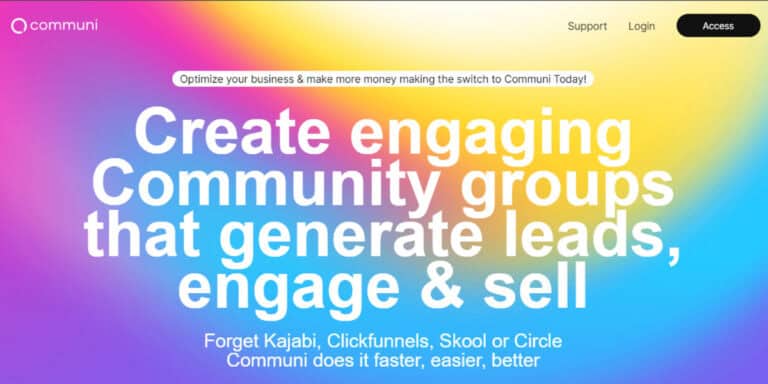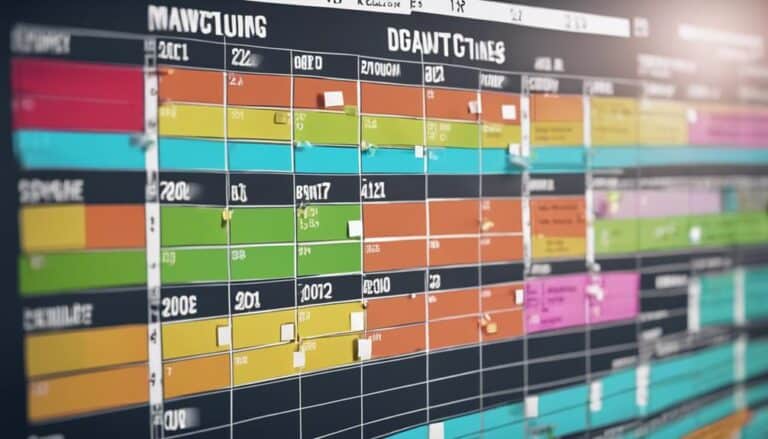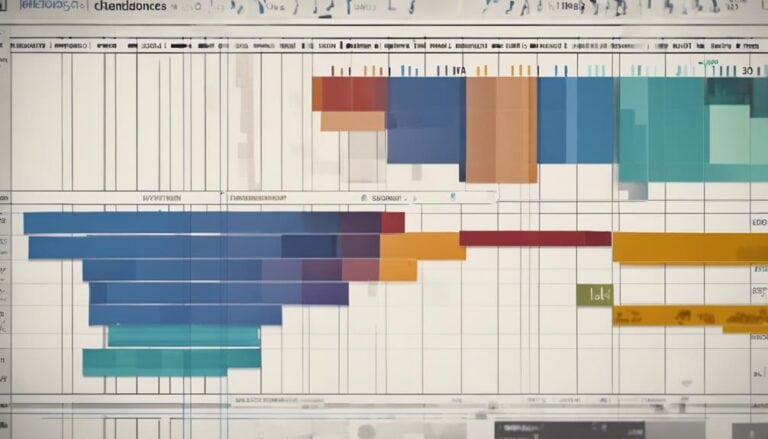When pondering Agile versus Waterfall for your projects, consider this: both methodologies offer distinct advantages and drawbacks, catering to different project requirements and team dynamics.
The decision-making process between the two is crucial, impacting the project's success significantly.
To make an informed choice, evaluating factors such as project complexity, stakeholder collaboration, adaptability to change, and resource allocation is paramount.
As you navigate through the nuances of these methodologies, uncovering the ideal fit for your unique project needs will be key to achieving optimal outcomes.
Key Takeaways
- Agile emphasizes adaptability, collaboration, and continuous feedback for dynamic projects.
- Waterfall follows a fixed, sequential path with detailed planning and limited adaptability.
- Choosing between Agile and Waterfall depends on project needs, adaptability, and stakeholder involvement.
- Consider Agile for flexibility and iterative adjustments, or Waterfall for structured, linear progression.
Understanding Agile and Waterfall
When delving into the realm of software development methodologies, understanding Agile and Waterfall is crucial for making informed decisions that align with your project goals and team dynamics. Agile is an iterative approach that emphasizes continuous feedback loops and adaptability throughout development. This methodology promotes team collaboration, shared skill sets, and enables regular, high-impact releases.
On the other hand, Waterfall is a sequential methodology with fixed phases and clear scope definitions. It requires final approval before advancing to the next phase, which can lead to missed deadlines and scope changes.
In Agile, the focus is on adaptive development, optimizing team output value through segmented incremental steps and ongoing collaboration. By contrast, Waterfall's rigid structure can sometimes hinder flexibility and quick adjustments. Agile's emphasis on continuous feedback and iterative improvements makes it well-suited for projects where requirements may evolve or change rapidly. Understanding the key differences between Agile and Waterfall methodologies is essential for determining which approach best suits your project needs and team dynamics.
Project Planning in Agile Methodology
Let's talk about the iterative planning process and adaptive project schedules in Agile methodology.
By breaking down work into small user stories, you can continuously refine and adjust your project plan.
This collaborative approach allows for flexibility and ensures that high-value features are delivered efficiently.
Iterative Planning Process
In Agile methodology, the iterative planning process forms the backbone of project planning, fostering adaptability, collaboration, and continuous refinement throughout the development cycles. Agile planning revolves around iterative development cycles, ensuring the continuous delivery of valuable and high-value increments regularly.
This approach allows for adapting to changing requirements effectively, as Agile planning emphasizes flexibility and adaptability to meet evolving project needs. By breaking down work into incremental development cycles, Agile methodologies enable teams to collaborate closely, communicate openly, and make adjustments as needed.
This iterative process not only enhances project transparency but also ensures that the project stays on track to deliver outcomes that align with stakeholder expectations.
Adaptive Project Schedules
To create adaptive project schedules in Agile methodology, emphasize short-term goals and iterations for flexibility and responsiveness. Agile project schedules are designed to accommodate evolving requirements and feedback, ensuring that the team can adjust promptly.
By focusing on delivering value early and continuously, Agile methods prioritize customer satisfaction. Collaboration and communication play a crucial role in Agile project planning, aligning schedules with customer needs and fostering a transparent working environment.
Regular reviews allow for constant improvements and adjustments to optimize team productivity and project outcomes. With Agile, the emphasis is on staying adaptable and responsive, ensuring that the project stays on track and delivers value efficiently.
Project Planning in Waterfall Methodology
Let's begin by looking at the key points of Project Planning in Waterfall Methodology.
Sequential Tasks Allocation ensures a structured approach from start to finish.
Detailed Requirements Documentation lays out the project's needs clearly.
Limited Flexibility in Changes highlights the method's adherence to the initial plan.
Let's explore how these aspects influence project management and outcomes in the Waterfall approach.
Sequential Tasks Allocation
Consider the streamlined flow of tasks in Waterfall methodology, ensuring a linear progression towards project completion. In Waterfall, tasks are allocated in a sequential order, following a structured approach that emphasizes detailed project planning and dependencies between tasks to maintain the project timeline. Each phase must be fully completed before moving on to the next, preventing overlap and iterations. Below is a table illustrating the sequential task allocation in Waterfall methodology:
| Phase | Task Allocation |
|---|---|
| Requirements | Gather and document needs |
| Design | Create system architecture |
| Implementation | Develop and code the solution |
| Testing | Conduct quality assurance |
| Deployment | Release the final product |
Detailed Requirements Documentation
In ensuring the success of your project within the Waterfall methodology, detailed requirements documentation plays a crucial role in laying the foundation for project planning.
When it comes to software projects, the thorough documentation involved in Waterfall methodologies includes creating a project scope document that outlines all features and deliverables. This detailed documentation acts as a blueprint, guiding the development process and ensuring that predefined requirements are met.
Changes to requirements can be challenging within Waterfall due to its rigid sequential nature, making it vital to have a clear and comprehensive scope document from the start. This approach helps minimize scope creep and ensures that project milestones are achieved as planned.
Limited Flexibility in Changes
Within the Waterfall methodology, navigating the limited flexibility in changes during project planning requires meticulous attention to detail and proactive risk management strategies. The rigid sequential approach of Waterfall, with its fixed project requirements, can make adapting to changes challenging. Here is a comparison in table form to highlight the differences in flexibility between Agile and Waterfall methodologies:
| Aspect | Agile | Waterfall |
|---|---|---|
| Flexibility | Embraces changes during all project phases | Limited flexibility, changes are difficult |
| Changes | Welcomes changes even late in the project | Changes require significant replanning |
| Adaptability | Highly adaptive to evolving project needs | Struggles to adapt to unexpected changes |
| Project Scope | Scope can evolve based on customer feedback | Fixed scope from the beginning |
| Risk Management | Mitigates risks through iterative cycles | Higher risk due to limited change flexibility |
Iterative Vs. Sequential Project Planning
For effective project planning, embrace the iterative approach of Agile or the sequential model of Waterfall to tailor your process to the project's needs and constraints. When considering Iterative Vs. Sequential Project Planning:
- Iterative Development: Agile project planning emphasizes iterative development, allowing for continuous adjustments based on feedback received throughout the process. This iterative nature enables teams to adapt quickly to changing requirements and deliver value incrementally.
- Sequential Phases: Waterfall project planning follows a sequential model where phases progress only after final approval, which can lead to potential delays if changes are needed. This sequential approach works well for projects with clearly defined requirements upfront.
- Adaptability and Velocity: Agile promotes adaptability and velocity through regular feedback intervals and shared skill sets among team members. This collaborative environment enhances the team's ability to respond to changes efficiently, ensuring the project stays on track and delivers value consistently.
Flexibility Vs. Rigidity in Planning
Embrace the dynamic nature of Agile methodology's flexible planning approach, which contrasts sharply with Waterfall's rigid and sequential project management structure. Agile methodology allows for iterative cycles and adaptability, enabling teams to respond quickly to changing requirements. In contrast, Waterfall methodology follows a strict plan with fixed phases, making it challenging to accommodate alterations once the project has started.
Let's take a closer look at how the flexibility of Agile methodology differs from the rigidity of Waterfall in planning:
| Agile Methodology | Waterfall Methodology | Comparison |
|---|---|---|
| Flexibility in planning with iterative cycles | Rigidity in planning with fixed phases | Agile allows for continuous adjustments based on feedback |
| Emphasis on collaboration and quick adaptation | Structured and linear planning process | Waterfall requires detailed upfront planning |
| Quick response to changes | Challenges in accommodating changes | Agile's flexible approach contrasts with Waterfall's structured process |
Adapting to Change in Project Planning
When approaching project planning, remain open to the evolving needs and feedback that may necessitate adjustments along the way, embracing the core principle of adaptability inherent in Agile methodology.
In Agile project management, adaptability is key to success, allowing for continuous improvements and changes throughout the project.
On the other hand, Waterfall project management may struggle with accommodating changes, as its rigid structure limits flexibility once the initial plan is in place.
The ability to pivot swiftly based on feedback and evolving requirements is a defining feature of Agile, enabling teams to stay responsive and aligned with project goals.
Embracing adaptability in project planning fosters a dynamic environment where changes are seen as opportunities for growth rather than obstacles to overcome.
Choosing the Right Approach for You
Wondering which project management approach is best suited for your project's unique needs and goals? When deciding between Agile and Waterfall methodologies, it's crucial to consider factors like project complexity, adaptability, stakeholder involvement, and feedback mechanisms. Agile is well-suited for projects with evolving requirements that benefit from iterative development cycles, while Waterfall is ideal for projects with stable, well-defined requirements and a structured approach.
To help you make an informed decision, consider the following key points:
| Aspect | Agile |
|---|---|
| Flexibility | Highly adaptive to changes |
| Speed | Quick iterations for rapid progress |
| Stakeholder Involvement | Continuous feedback and collaboration |
| Project Type | Suited for dynamic, evolving projects |
| Aspect | Waterfall |
| Planning | Detailed upfront planning |
| Structure | Sequential stages with clear goals |
| Risk Management | Addressed early in the process |
| Project Type | Ideal for projects with fixed requirements |
Frequently Asked Questions
What Is the Main Difference Between Waterfall and Agile?
In the development process, Agile emphasizes iterative approaches with flexibility, client involvement, and continuous feedback. Waterfall, in project management, follows a rigid sequence with fixed phases, less client input, and a structured timeline from the start.
What Is the Difference Between Agile and Waterfall Success?
In project management, Agile boasts higher success rates due to team collaboration, iterative development, customer feedback, and adaptability. Emphasizing flexibility over predictability, Agile reduces time to market, manages risk effectively, and ensures adaptability for stability.
Is Jira Agile or Waterfall?
Jira is compatible with both Agile and Waterfall methodologies in project management and software development. It supports team collaboration, issue tracking, and sprint planning. You can seamlessly switch between Agile and Waterfall methods based on your project needs.
What Is the Difference Between Scrum and Waterfall?
In Scrum methodology, you focus on iterative development and collaborative teams, allowing for adaptive changes. Waterfall approach, with its sequential phases and linear processes, emphasizes upfront planning. Agile principles drive Scrum, while traditional techniques guide Waterfall's fixed scope.
Conclusion
You've learned about the key differences between Agile and Waterfall methodologies, and how to choose the right approach for your project needs.
Remember, just like in a toolbox, having both Agile and Waterfall strategies available can help you tackle any project challenge that comes your way.
So, keep an open mind, stay adaptable, and be ready to iterate to achieve project success.
Good luck on your project management journey!





